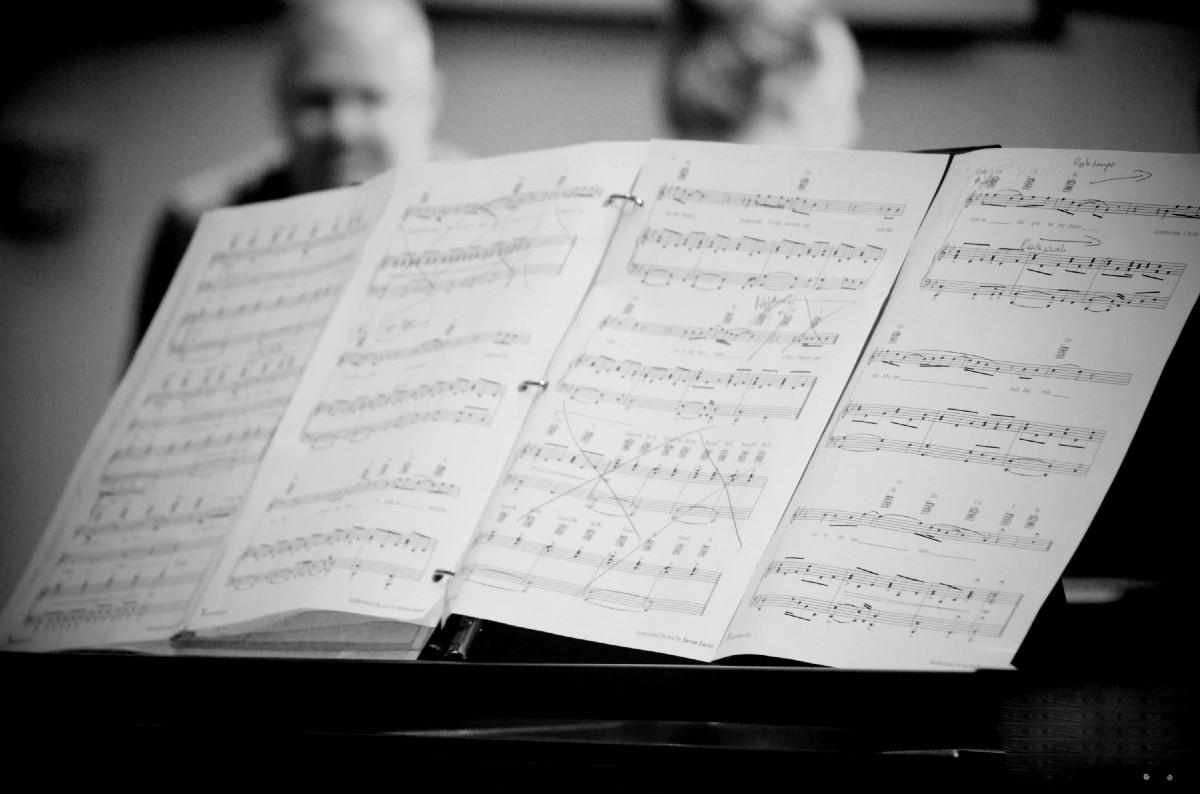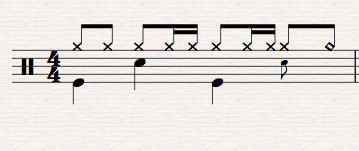How To Read Drum Music?

Before we start on the basics of reading drum music, being able to read drum notation isn’t mandatory! Plenty of great drummers can’t read drum music at all and play entirely by ear. However, most would probably admit they wish they had learned to read music.
Many people who want to learn how to read drum music get put off by the fact that drum notation can look quite complex at first.
However, it’s actually pretty simple to grasp because there are only 2 main things you need to be able to work out from the notation:
1. Which drum to play
2. When to play it
Which Drum To Play
Obviously you don’t need to be able to read pitch when playing drums, but you do need to know which drum to play. In drum notation each individual line/space corresponds to a different drum. The standard key is shown below:

Drum Music Notation
When To Play It
Drum notation uses all of the same ingredients as standard notation so, as long as you know how to read sheet music, you have all of the skills you need to read drum music.
1. So, firstly look at the tempo marking and the time signature. The tempo marking will show you how fast the pulse is, whilst the time signature will show you the grouping of the beat.
2. Now look at which line/space the note is on — this will tell you which drum to play.
3. Then look at the note lengths. The combination of pulse and note lengths enables you to play the rhythm. (Have a look at my article on note lengths if you’re unsure).
Some Drum Music Examples
Let’s have a look at some examples of drum music. In the first example below, the top number in the time signature tells us that there are 4 beats in a bar. The bottom number tells us that the beats are quarter note beats (crotchets). The crossed notehead sitting above the top line tells us to play a hi hat and the note is an eighth note (a quaver). So, in this example, we would play 8 hi hats in the measure (bar). In other words, a hi hat would be played on every half beat.

Obviously we are going to want to play more than just a single hi hat at any one time. Let’s add a kick drum in. Here you will see that a quarter note (crotchet) kick drum is to be played on the 1st and 3rd beats of the bar. The eighth note (quaver) hi hat pattern is carrying on as before.

If we add the snare drum in on the 2nd and 4th beats of the bar playing quarter notes (crotchets) then we can make a basic drum pattern. Notice how the stems on the hi hat go up, whilst the stems on the kick drums point downwards. This is to make the drum notation less cluttered and more easy to read.

Adding In the Magic!
Once you have worked out how to play basic drum notation you will easily be able to read added extras such as flames and ghost notes. In drum music, flams are shown with a small note just prior to the main note.

Ghost notes are also shown by a small note, but this time they are on their own such as the 2nd snare in the example below.

The best way to learn how to read drum music is to try it out 🥁 🎶